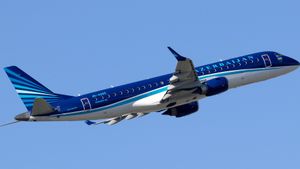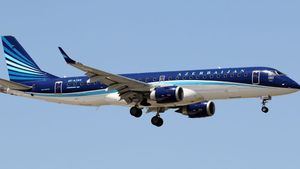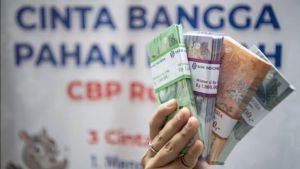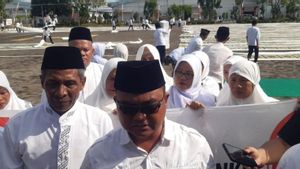JAKARTA - Australia announced Monday it will reopen its borders to vaccinated travelers this month, ending two years of woes for the tourism sector, reviving migration and injecting billions of dollars into the economy.
This move effectively takes time for the last major component of Australia's response to the COVID-19 pandemic, which has been associated with relatively low rates of death and infection. Another core strategy, the open-close lockdown, was suspended for good in December.
Australia has taken steps in recent months to relax border controls, such as allowing skilled migrants and arranging quarantine-free travel, 'travel bubbles', with certain countries such as New Zealand.
However, the reopening, which took effect on February 21, is the first time since March 2020 that people can travel to Australia from anywhere in the world as long as they are vaccinated.
"If you were double vaccinated, we look forward to welcoming you back to Australia," Prime Minister Scott Morrison said at a news conference in Canberra.
The tourism industry, which relies on a domestic market badly affected by movement restrictions, welcomed the decision that comes three months before PM Morrison faces an election.
"In the two years since the border was closed, the industry has fallen to its knees," Australian Tourism Export Council managing director Peter Shelley said by telephone.
"Now we can change our collective efforts to rebuild a broken industry," he added.
Meanwhile, Tourism and Transport Forum CEO Margy Osmond said the industry was 'delighted' by the reopening, but would need coordination to ensure Australia was competitive as a destination.
"It's not as simple as just turning on the faucet and we're seeing a number of international tourists returning to where they were before COVID," he told reporters.
International and domestic tourism losses since the start of the pandemic have amounted to about A$101.7 billion, according to government agency Tourism Research Australia (TRA). International travel spending in Australia fell from A$44.6 billion in the 2018-19 financial year, to just A$1.3 billion in 2020-2021 according to TRA.
As elsewhere in the world, Australia's COVID cases have surged in recent weeks due to the Omicron variant which medical experts say may be more contagious but less virulent than previous strains.
But, with more than nine in 10 Australians over the age of 16 fully vaccinated, new cases and hospitalizations appear to be slowing, authorities said.
Kangaroo Country is known to report more than 23,000 new infections on Monday, the lowest for 2022 and far from the peak of 150,000 about a month ago.
Meanwhile PM Morrison said the government would send up to 1,700 Australian Defense Force personnel to fill a staff shortage in the elderly care sector, following complaints of staff shortages and exhaustion due to the increasing pressure brought on by the pandemic.
To note, about 2.4 million cases have been recorded in Australia since the first Omicron case was detected in Australia in November. Until then, Australia had only counted about 200,000 cases. The total number of deaths has stood at 4,248 since the pandemic began.
The English, Chinese, Japanese, Arabic, and French versions are automatically generated by the AI. So there may still be inaccuracies in translating, please always see Indonesian as our main language. (system supported by DigitalSiber.id)











